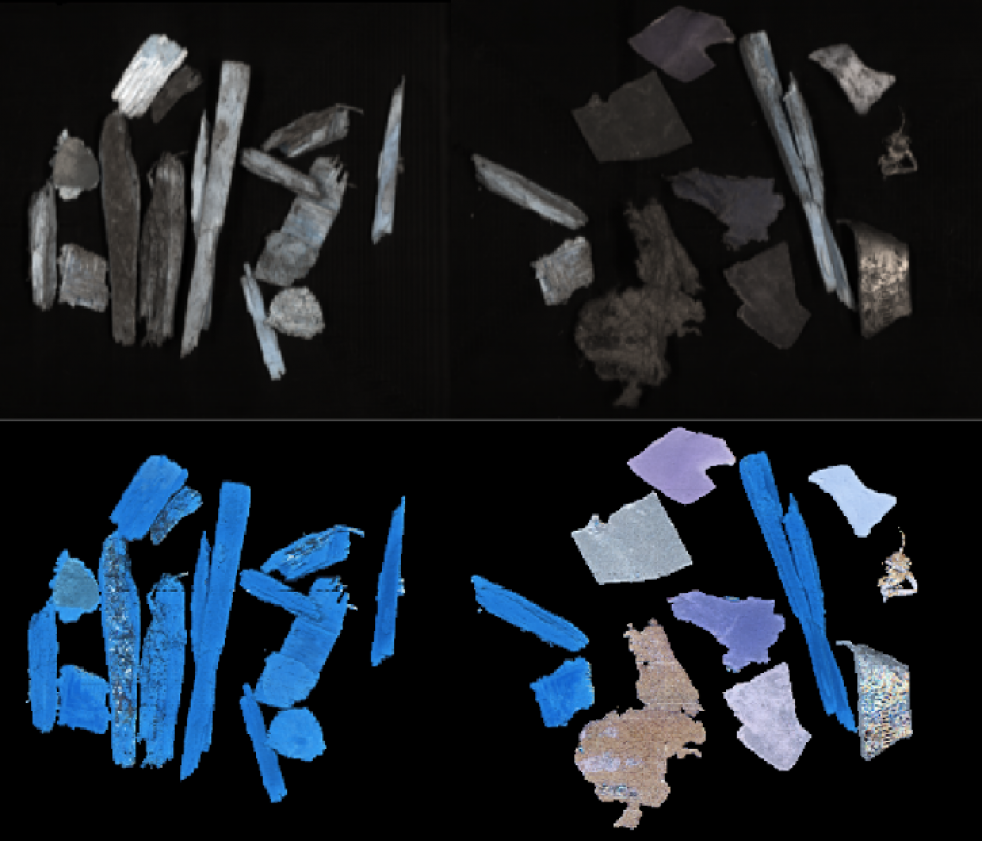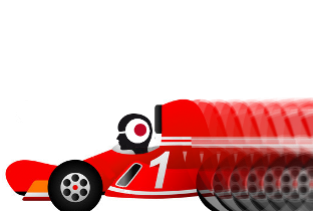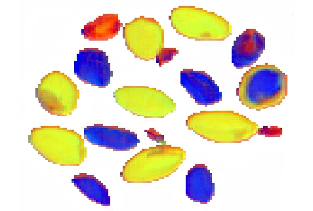Wood Sorting by Chemical Colour Imaging
The images above show possibilities of Chemical Color Imaging in wood recycling. Wood recycling is a well established industry. While in the last years metal parts were typically separated, the focus is now changing to get any non-wood parts out of the material stream. Especially various plastics can strongly influence the subsequence processing of recyclable wood.
By using the Chemical Color Imaging technology these unwanted parts can easily be detected. Due that a hyperspectral camera together with a Perception System can easily be integrated into an existing machine vision solution of the customer, chemical and molecular information is represented in a format that everybody can understand – Color. Consequently everybody who can handle color data is now able to sort according to chemical information.
The lower image show one of a series of possible perceptions by applying Chemical Color Imaging to hyperspectral data. The left pile is showing only wood parts, while the right pile is a mixture of wooden parts and polymers.
As it can be seen, the bluish color corresponds to the spectral information of wooden parts, while the other objects are colored differently. The part in the lower right doesn’t hold much spectroscopic information caused by the chemistry of the part – what can be seen is a reflection of the mirroring surface. Also of interest is the wooden part on the left side that shows bluish-grayish information in the center, while the border is still in wooden-like bluish color. From analyzing its spectra, it can be recognized additional information beside wood. It’s expected that the reason for this could be some kind of painting on the wooden part.
So, with this example it is easy to demonstrate the advantages gained by applying Chemical Color Imaging: Also small variations in the chemistry are shown by different color impressions. Everything that corresponds to this wooden-typically bluish color must chemically correspond to the chemistry of wood. We are also able to recognize mixtures of materials by recognizing a color mixing (like we see for the part with the supposed painting on it). Also objects which cannot be “classified” spectroscopically (because of a reflection or because it is NIR-inactive like glass or black polymers) can be detected by a color different to wood.
Due this image is a color image and not a classified image, the customer is able to control the purity of the sorting by fine tuning the color classification by himself – therefore these customers have more control on the quality of the sorting compared to the conventional way of classifying directly in the “spectroscopic world”
The hyperspectral imaging data were provided by the Finnish company SPECIM, Spectral Imaging Ltd. and were captured with a hyperspectral camera working in the wave length region from 900 – 1700nm.







